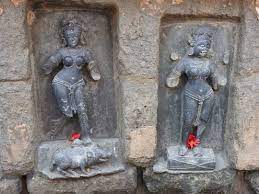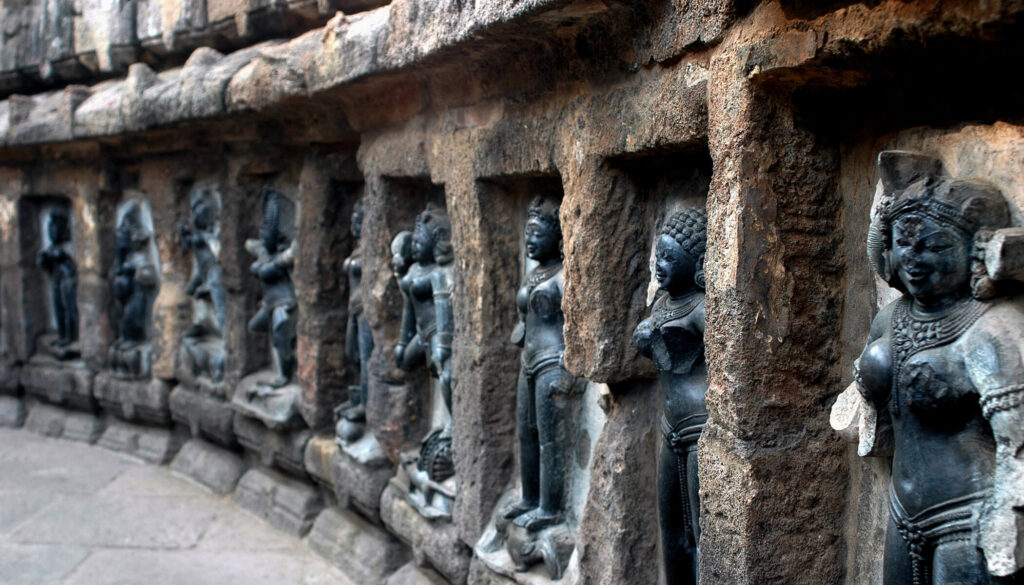Origin of Tantricism and Sixty-Four Yogini Cult in Odisha, formerly known as Odisha, in eastern India, is not just famous for its ancient temples and rich cultural heritage. It is also renowned for its association with Tantricism and the unique Sixty-Four Yogini Cult. These spiritual practices have deep roots in the region’s history and continue to be an integral part of its cultural fabric.
Tantricism is a complex spiritual tradition that originated in ancient India, possibly around the 5th century CE. It is known for its esoteric rituals, iconography, and the use of mantra and meditation as a means to attain enlightenment. The term “tantra” loosely translates to “loom,” symbolizing the weaving of spiritual practices and beliefs to create a holistic understanding of the universe.
The origins of Tantricism in Odisha can be traced back to the Bhauma-Kara dynasty, which ruled the region from the 8th to the 10th century CE. They were patrons of art and religion, fostering the growth of various practices, including tantric rituals and the worship of goddesses. During this time, the concept of the Sixty-Four Yogini Cult gained prominence.
The Sixty-Four Yogini Cult revolves around the worship of sixty-four goddesses, also known as Yoginis, who are believed to be manifestations of the divine feminine energy. Each Yogini is associated with a specific attribute or power, such as healing, creativity, or protection. The cult places a strong emphasis on the empowerment of women and their integral role in spiritual practices.
The primary center of the Sixty-Four Yogini Cult in Odisha is the Hirapur Temple, located near the capital city of Bhubaneswar. This temple, built in the 9th century CE, is one of the few surviving Yogini temples in India. It features a circular structure with recesses housing the sixty-four statues of the Yoginis, arranged in a symmetrical pattern.

The tantric rituals performed at the Hirapur Temple are fascinating and intricate. Devotees engage in meditation, chanting of mantras, and offerings to the Yoginis to seek their blessings and guidance. The temple complex also serves as a symbol of the divine feminine energy and the importance of women in spiritual practices.
Apart from the Hirapur Temple, there are remnants of other Yogini temples scattered across Odisha. The most notable among them are the Ranipur Jharial Temple in Balangir district and the Indrani Temple in Bhubaneswar. These sites hold immense historical and archaeological significance, providing insights into the development and spread of tantric practices in the region.
Over the centuries, the Sixty-Four Yogini Cult has evolved and assimilated influences from various religious traditions, including Shaivism, Shaktism, and Buddhism. It continues to thrive in Odisha, attracting scholars, researchers, and spiritual seekers from around the world. Its unique blend of ancient rituals, devotion to the divine feminine, and emphasis on female empowerment sets it apart from other spiritual practices.
The origin of Tantricism and the Sixty-Four Yogini Cult in Odisha showcases the region’s rich spiritual heritage and the importance of goddess worship in Indian culture. These practices provide a unique perspective on how ancient traditions continue to shape the cultural landscape of Odisha. As the state continues to preserve and promote its ancient temples and spiritual practices, it invites people to explore and experience the profound wisdom embedded within these traditions.
You can read our another post on Dandanata The Performative Dance In Odisha

Write A FAQ For Origin of Tantricism and Sixty-Four YoginiCult in Odisha
What is the origin of Tantricism and the Sixty-Four Yogini Cult in Odisha?
The origin of Tantricism and the Sixty-Four Yogini Cult in Odisha can be traced back to ancient times. Tantricism, as a spiritual and philosophical tradition, emerged in India around 5th century CE. The Sixty-Four Yogini Cult, which worships a group of sixty-four female deities known as Yoginis, also finds its roots in ancient Hindu mythology.
What is the significance of the Sixty-Four Yogini Cult in Odisha?
The Sixty-Four Yogini Cult holds great significance in Odisha, particularly in the tribal areas around Hirapur and Ranipur-Jharial. It is believed to be one of the oldest worshipping traditions in the region. Devotees of the cult engage in various rituals, including offerings and recitation of mantras, to seek blessings and spiritual enlightenment from the Yoginis.
How do Tantric practices influence the Sixty-Four Yogini Cult in Odisha?
Tantric practices play a crucial role in the Sixty-Four Yogini Cult. Tantricism is characterized by its emphasis on harnessing the divine feminine energy, often through rituals involving meditation, visualization, and mantra recitation. These practices are also integral to the worship of the Yoginis in the cult, as devotees seek to connect with the divine feminine through Tantric rituals.
Are there any historical landmarks associated with the Sixty-Four Yogini Cult in Odisha?
Yes, there are several notable historical landmarks associated with the Sixty-Four Yogini Cult in Odisha. The most prominent among them is the Yogini Temple in Hirapur, near Bhubaneswar. This temple, believed to have been built in the 9th century CE, showcases intricately carved stone idols of the Yoginis. Another significant site is the Chausathi Yogini Temple in Ranipur-Jharial, which dates back to the 9th or 10th century CE and is considered to be the largest Yogini temple in India.
How has the influence of the Sixty-Four Yogini Cult evolved over time in Odisha?
The influence of the Sixty-Four Yogini Cult in Odisha has evolved and adapted over time. While it was once a prevalent form of worship in the region, it faced a decline during the colonial era. However, in recent years, there has been renewed interest in the cult, with efforts to preserve and promote its traditions and rituals. Today, it continues to attract devotees and researchers interested in exploring its spiritual and cultural significance.
